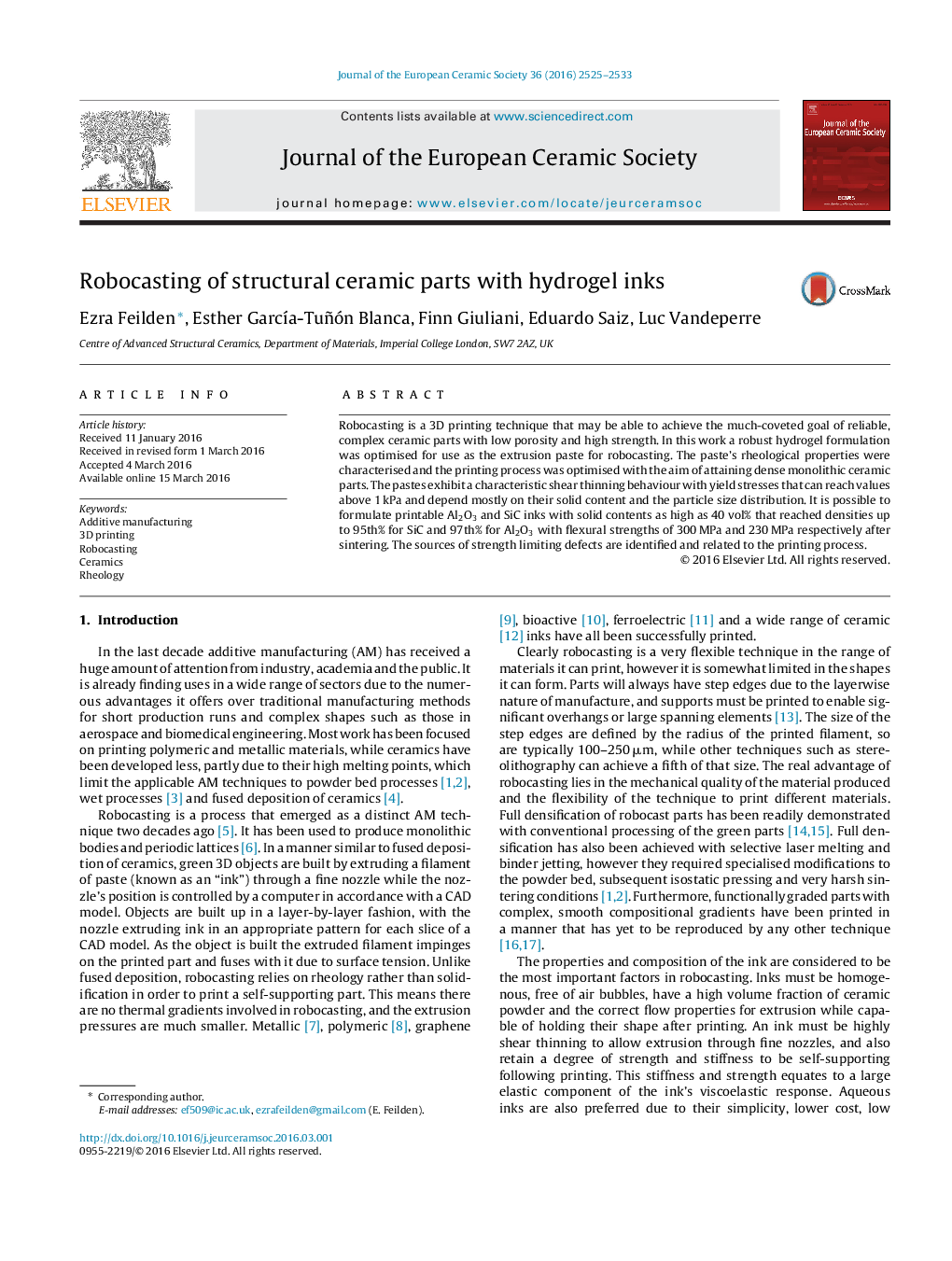| Article ID | Journal | Published Year | Pages | File Type |
|---|---|---|---|---|
| 1473458 | Journal of the European Ceramic Society | 2016 | 9 Pages |
Robocasting is a 3D printing technique that may be able to achieve the much-coveted goal of reliable, complex ceramic parts with low porosity and high strength. In this work a robust hydrogel formulation was optimised for use as the extrusion paste for robocasting. The paste’s rheological properties were characterised and the printing process was optimised with the aim of attaining dense monolithic ceramic parts. The pastes exhibit a characteristic shear thinning behaviour with yield stresses that can reach values above 1 kPa and depend mostly on their solid content and the particle size distribution. It is possible to formulate printable Al2O3 and SiC inks with solid contents as high as 40 vol% that reached densities up to 95th% for SiC and 97th% for Al2O3 with flexural strengths of 300 MPa and 230 MPa respectively after sintering. The sources of strength limiting defects are identified and related to the printing process.
